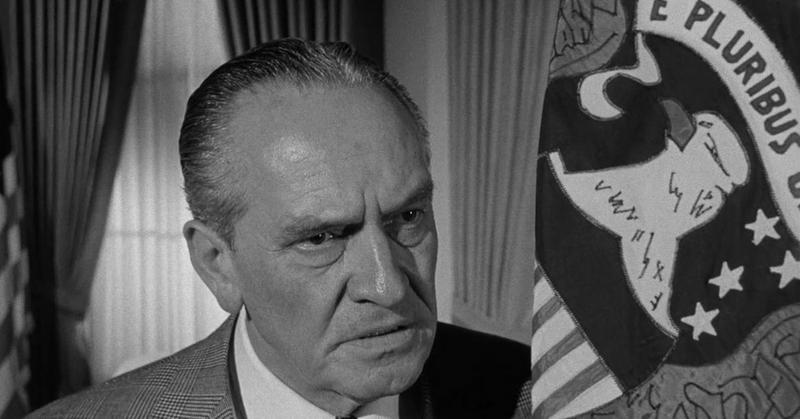1967: The 25th Amendment (VP Succeeds President) Is Adopted
By | February 5, 2020

What happens if a U.S. President resigns -- or has to be removed from office? Until the 25th Amendment to the Constitution was adopted in 1967, there wasn't a firm answer.
Such a weighty document as the Constitution has seen many changes over the years as our days of throwing tea into harbors and wooden teeth are well behind us. One such change that came more recently than many people recall was the 25th Amendment, which stipulates the line of succession and, most importantly, the terms of passing the title of Commander in Chief. Surprisingly, prior to 1967, Presidents of the United States wrote their own terms of who would succeed them in the case of death or incapacitation. Here’s everything you ever wanted to know about the 25th Amendment of our Constitution.
We’re Still Workshopping That

As we mentioned, prior to the ratification of the 25th Amendment, Presidents decided on their own who would take over, when and what constituted “incapacitation.” The first time such a concern arose was in 1841 when William Harrison became the first President to die in office. John Tyler took over when Harrison’s cabinet gave him the title of “Vice President Acting President.”
Tyler, perhaps, conscious of history, decided that title sucked and moved into the White House, swore himself in, and even gave an Inaugural Address. His boldness stirred quite a bit of controversy but he was eventually confirmed by Congress. Despite the hubbub, no one moved to change the process at that time.
Less Than Ideal Succession

The succession issue arose again when Woodrow Wilson suffered from a series of strokes from which he would never recover. When his cabinet suggested the Vice President take over, Wilson’s wife and doctor conspired to hide the severity of Wilson’s condition while the country continued without anyone at the helm. Not exactly how you draw it up.
President Eisenhower suffered similarly from minor strokes and penned a letter to Richard Nixon, instructing him that Nixon should determine if the President was unfit and take over as he saw necessary. The letter didn’t pass legal muster and Nixon acted as President during Eisenhower’s heart attack in ‘55 and surgery in ‘56. Nevertheless, Nixon was never officially sworn in.
Ok We Really Need To Do Something About This

The first time the Senate and Congress decided they really needed something more concrete was when John F. Kennedy was assassinated in Dallas in 1963. During the assassination of JFK, it was unclear whether Vice President Lyndon B. Johnson was also severely injured.
That’s when powers to be looked around and said we really need to put pen to paper for a plan in case the worst occurs. Two years later, they put forth a suggested Amendment for succession. Another two years elapsed before Congress forwarded that resolution, which President Johnson signed into law.
In 1973, the 25th Amendment was invoked when Spiro Agnew resigned from the Vice Presidency, and Richard Nixon nominated Gerald Ford to replace him. The Senate voted 92-3 to confirm Ford. Less than a year later, when Nixon resigned amid the Watergate scandal, the 25th Amendment was again used to elevate Ford to the U.S. Presidency. Ford nominated Nelson Rockefeller to serve as his Vice President, and the Senate confirmed him 90-7.
Section Four

The 25th Amendment is rather straightforward, except for one section which every now and then stirs the pot. Section Four:
“Stipulates that when the vice president and a majority of a body of Congress declare in writing to the president pro tempore of the Senate and the Speaker of the House that the president is unable to perform the duties of the office, the vice president immediately becomes acting president.”
Clearly, that leaves a bit of gray with the phrase “the President is unable to perform the duties of the office.” If we are all being honest with ourselves, regardless of if you’re on the left or right, many Presidents have been unable to perform the duties of office while completely healthy.
Fans of The West Wing will remember one episode which used Section Four as a plot device. Despite Section Four's existence, it has never been utilized in U.S history. However, in 1987 Ronald Reagan was described as “inattentive, distracted, lazy and inept by several concerned members of his staff.”
The staff suggested the use of Section Four. However, Reagan got a new Chief of Staff who, naturally, decided Reagan was totally fine and likely quietly removed anyone who ever uttered the words “Section Four.” For what it’s worth, Reagan was diagnosed with Alzheimer’s disease years later, so perhaps, that staff was onto something.
